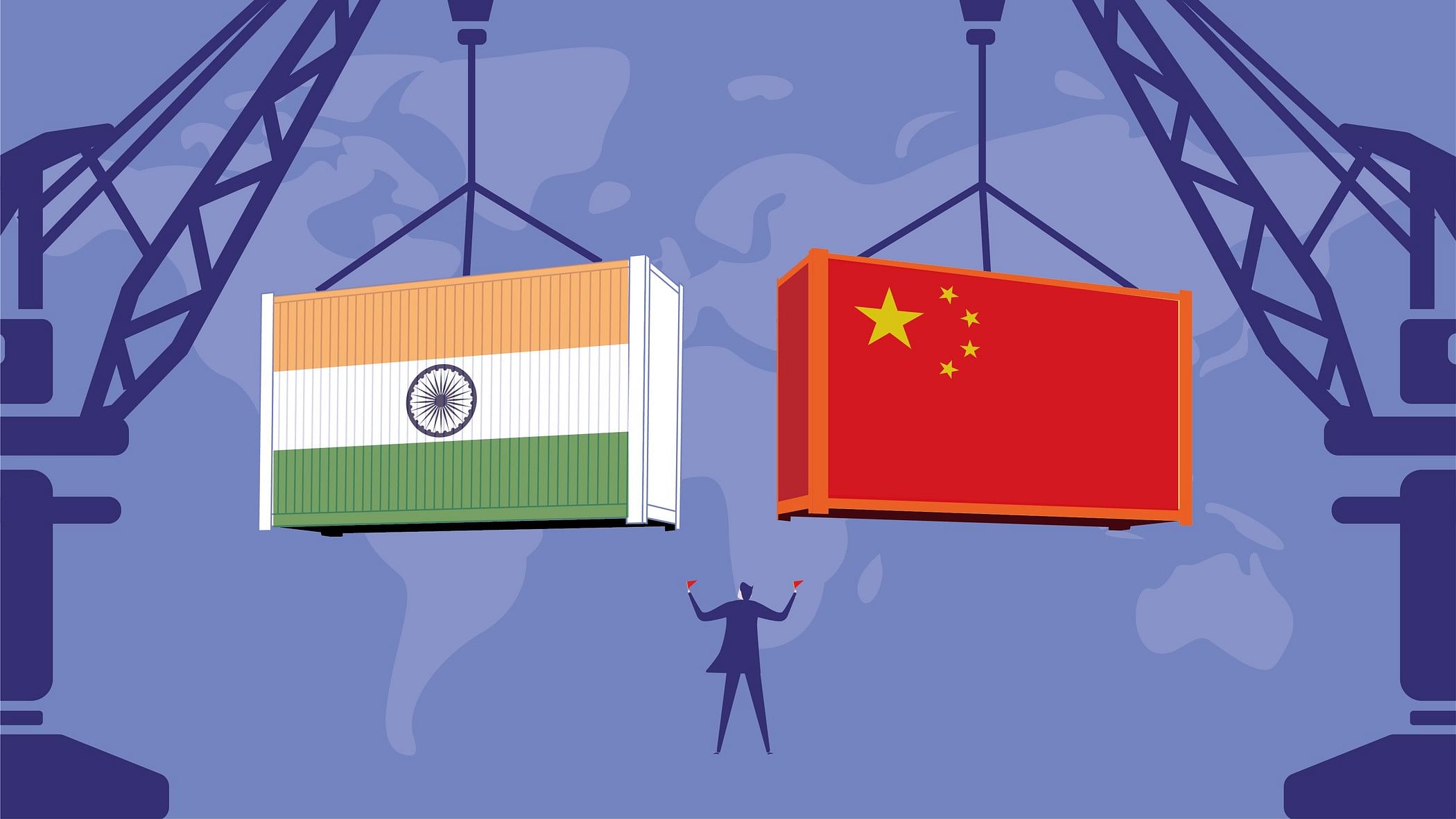
Image for representation.
Credit: iStock Photo
India’s reliance on China for electronic components needed to assemble an array of goods ranging from televisions and laptops to mobile phones has been expanding rapidly in recent years. This dependence has been highlighted lately in the commerce ministry’s data showing that over 50% of such imports are being sourced from China and Hong Kong. Recent reports say that imports have remained consistently at this level over the past five years. Such data indicates that the questions raised in this year’s Economic Survey over the Chinese pre-eminence in critical manufacturing sectors globally, and the difficulty faced by emerging economies like India in catching up need to be considered seriously and realistically.
The survey pointed out that Chinese dominance over global supply chains was an area of concern, especially after the disruptions caused by the Ukraine war. It cautioned that it may not be the most prudent approach to think that India can take up the slack from China vacating certain manufacturing spaces. This raised two questions. The first was whether it was possible to plug India into the global supply chain without plugging itself into the Chinese supply chain. The second was on seeking the right balance between importing goods and importing capital from China.
The survey cited the cases of Brazil and Turkey which have raised tariffs on import of Chinese e-vehicles while simultaneously taking steps to attract Chinese investment in the same sector. It argued that India, which must make similar hard choices, could replace imports with investments that would create domestic know-how.
In other words, India should seriously examine the prospect of opting for Chinese foreign direct investment (FDI) despite the chilly bilateral ties and persistent border tensions. At first glance, the prospect of inviting investors from a country which has for long been viewed as the enemy seems a doubtful proposition. The hard reality, however, is that the northern neighbour is already playing a big role in this India’s economy.
The presence of Chinese companies is evident to all, especially in the high-profile area of mobile phones, but there is little reliable data on the precise numbers. One Chinese agency estimated a few years ago that there are about 430 companies over here. It is obvious, however, that Indian consumers are familiar with many brand names including Lenovo, Xiaomi, OnePlus, Vivo, Haier, and Huawei. In recent years, however, it has become increasingly difficult for companies from China to make fresh investments, given the restrictions imposed after the border clash at Galwan in 2020.
This included the release of press note number three, which imposed curbs on investments from neighbouring countries. It stipulated that companies based in countries sharing a land border with India could invest only after government clearance and the automatic route was no longer available.
This negative attitude has altered quite a bit since then for various reasons. A significant one is that multinationals shifting projects here under the China Plus One strategy are finding it difficult to get visas for technicians needed to get them underway. Other projects, which are part of global supply chains, also need to bring in machinery and personnel from China to get off the ground. The delays are reported to be causing huge financial setbacks in several industries. The result has been an easing of restrictions and the creation of a portal to facilitate the process for short-term business visas.
It is against this backdrop that the survey’s questions need to be given serious consideration. On the first one of plugging India into global supply chains, it is clear the aim cannot be achieved without becoming enmeshed in Chinese manufacturing systems. The only other option would be to stay away from global supply chains altogether, which would be a tremendous setback to India’s efforts to become a manufacturing hub.
The second question regarding importing capital is more sensitive to the overall aspect of national security. Yet the fact is that allowing FDI from China in a regulated and monitored fashion is a far better prospect rather than blocking this route. It would ultimately have a beneficial impact in the long run in terms of technology transfer and ensuring greater value addition in key industrial sectors. The alternative of simply continuing to import critical components and equipment from China in increasingly large volumes is certainly not a desirable one.
India, therefore, needs to take some bold steps to become part of global supply chains while taking advantage of the China Plus One strategy. This will only be possible by providing flexibility in terms of investment flows. It can be accompanied by higher tariffs to contain imports in selected areas but a liberal policy on Chinese FDI is the need of the hour.
(Sushma Ramachandran is a senior journalist.)
Disclaimer: The views expressed above are the author's own. They do not necessarily reflect the views of DH.